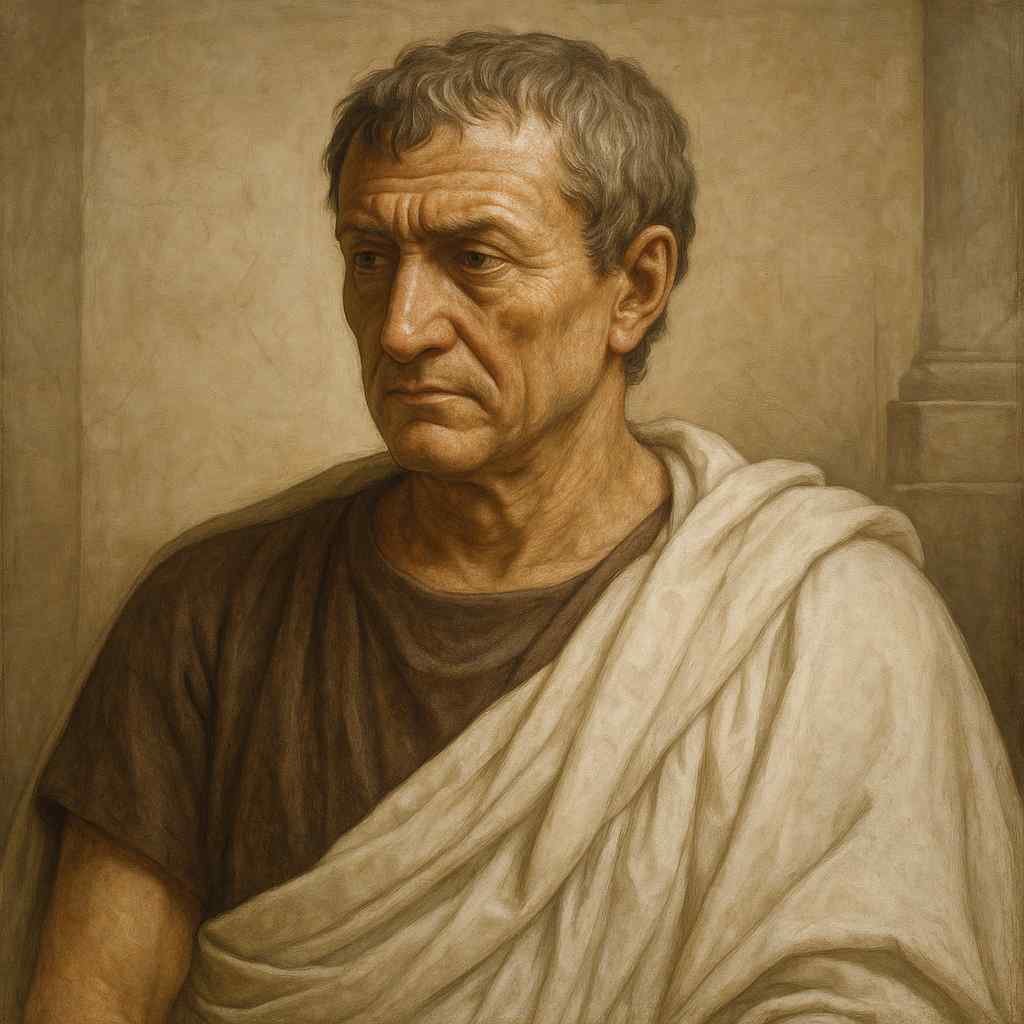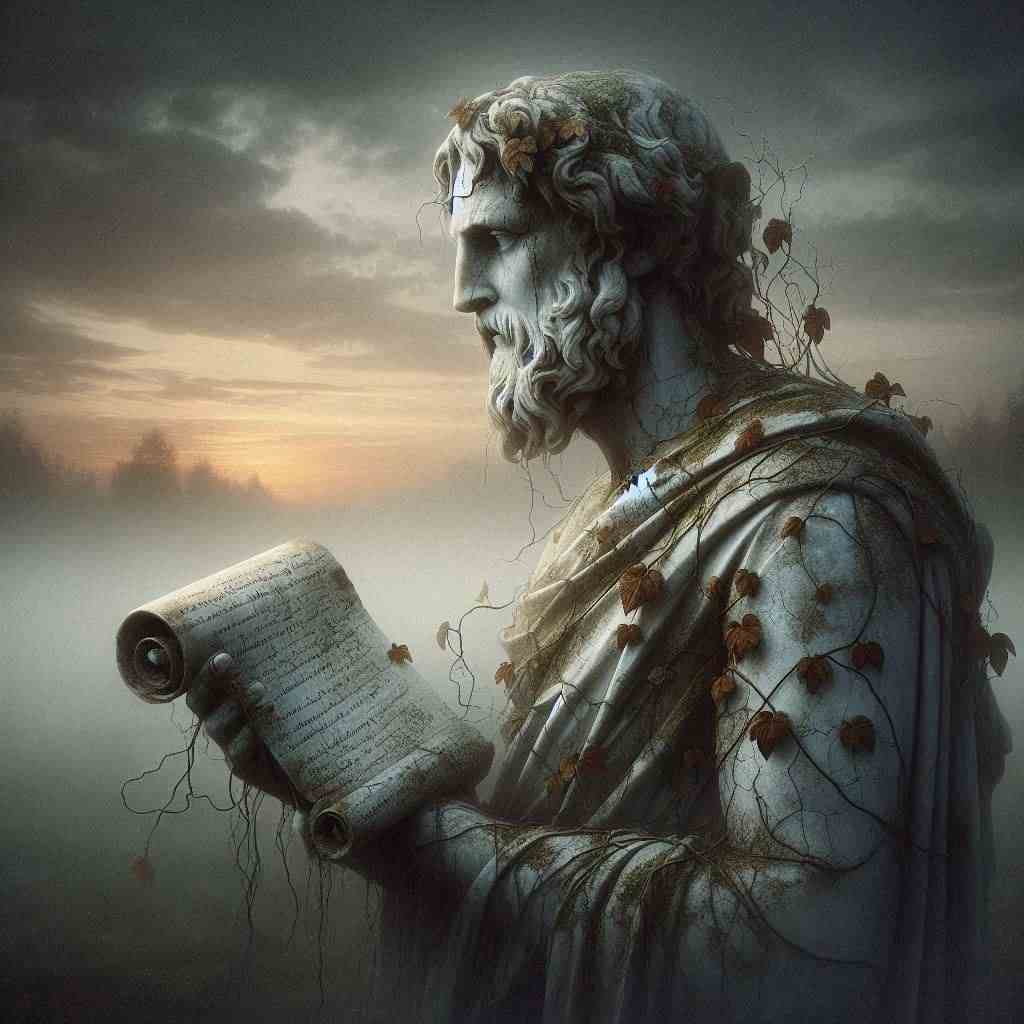2 Poems by Publius Ovidius Naso
43 BCE - c.18
Publius Ovidius Naso Biography
Born Publius Ovidius Naso in 43 BCE, Ovid grew up in a rapidly transforming Roman Empire, which would come to shape much of his work. His birthplace was the town of Sulmo, located in the rugged terrain of the Abruzzi region east of Rome. While removed from the political center of the Empire, this provincial upbringing gave Ovid a unique perspective on Roman society, unclouded by the immediate tensions of the city, yet not isolated from the culture and learning valued in Roman circles. His family was well-to-do, granting him a classical education and preparing him for a legal career—a typical path for Roman boys of his status. However, Ovid would ultimately forsake the expected political or legal life, choosing instead the path of a poet, which, while less reputable in the eyes of Roman elite society, would secure him a profound and lasting influence in Western literature.
Ovid arrived in Rome for his studies during his teenage years, immersing himself in rhetoric and literature. He was trained under esteemed teachers, including the rhetorician Arellius Fuscus, and studied alongside the poet Propertius, an influence who may have helped Ovid navigate the competitive literary circles of Rome. Despite his training in rhetoric—a skill meant to sharpen the tools of law and oration—Ovid found himself drawn more to the freedom of verse and the artistry of words than to legal precision. His early talents caught the eye of notable figures in the literary scene, and soon he became associated with poets like Virgil, Tibullus, and Horace, whose works helped define the Golden Age of Latin literature.
Ovid’s literary career began in earnest with his early experiments in elegy, a form traditionally reserved for love poetry but which he soon adapted to suit his playful and often ironic tone. His first major work, Amores (The Loves), explored themes of romantic love in a manner that was, by Roman standards, irreverent and humorously self-aware. In these elegies, Ovid paints himself as a poet-lover entangled in relationships, speaking often of Corinna, a fictionalized mistress whose personality reflects Ovid’s playful take on love and desire. Unlike his predecessors, who tended to ennoble love and lament its hardships, Ovid relished in love’s paradoxes with irony and wit. By treating romantic desire as a game, he introduced a new approach to the genre, pushing Roman elegy toward a lighter, more skeptical perspective on love.
Following the success of Amores, Ovid undertook a more ambitious project in Ars Amatoria (The Art of Love), which would later contribute to his political undoing. Written in three books, Ars Amatoria operates as a guide to the art of seduction, directed at both men and women. Far from a traditional love poem, the work unfolds as a how-to manual for navigating the complexities and subtleties of romantic pursuit, couching its instruction in satire and exaggeration. Yet this was no innocent undertaking; Rome under Augustus had adopted strict moral codes aimed at curbing perceived moral decay, promoting traditional family values, and solidifying the state’s authority. In this environment, Ovid’s frank exploration of sexual politics was both a provocation and an affront to the Augustan regime. It is worth noting that Ars Amatoria would later be cited as one of the reasons for his exile, a punishment that has puzzled scholars and historians for centuries.
Around the same period, Ovid embarked on his magnum opus, Metamorphoses, an epic that would come to define his literary legacy. Unlike the traditional Roman epics, Metamorphoses eschews a single heroic narrative in favor of a sprawling tapestry of mythological transformations, from the creation of the world to the deification of Julius Caesar. The poem’s fifteen books contain over 250 tales, each interconnected by the theme of transformation. Ovid’s metamorphoses are physical, emotional, and symbolic, affecting both gods and mortals in ways that reflect universal human experiences—love, jealousy, ambition, and fate. Metamorphoses also contains a stylistic versatility that sets it apart from earlier epics. Ovid moves fluidly between genres, shifting from tragedy to comedy, from romance to horror, embodying a protean spirit that matches the metamorphic theme of his work. His innovative style and flexible structure had an enormous influence on future generations of poets, writers, and artists, from Dante and Chaucer to Shakespeare and Titian.
Metamorphoses also displays Ovid’s ambivalence toward the gods and traditional religious structures. While many earlier poets, including Virgil, often exalted the gods as majestic and morally instructive, Ovid’s gods are capricious and often cruel, embodying the flaws and desires of the very humans they preside over. This irreverence is one of the defining features of Ovid’s worldview, a secular sensibility that would resonate with Renaissance and Enlightenment writers who sought inspiration in his skepticism. In his depiction of the divine, Ovid portrayed the gods not as ideals to be revered but as forces to be understood, questioned, and sometimes feared. This stance would contribute to his growing estrangement from the Augustan regime, which relied on religious piety as a pillar of social order.
While his irreverence and wit captivated Roman audiences, it ultimately led to his downfall. In 8 CE, at the height of his fame, Ovid was abruptly exiled to Tomis (modern-day Constanța, Romania) on the Black Sea, by decree of Emperor Augustus. The exact reason for this exile remains unclear, though Ovid himself enigmatically cited a “carmen et error” (a poem and a mistake). While Ars Amatoria is often suggested as the “poem,” the nature of the “mistake” has remained a mystery. Scholars have speculated that it might have involved a scandal or perceived threat to Augustus’s moral reforms, but there is no definitive evidence. Ovid’s banishment was severe and unyielding; unlike other exiles, he would not be allowed to return to Rome, and his appeals for clemency—made through his later works—were repeatedly denied.
In exile, Ovid’s writings shifted in tone from playful and satirical to plaintive and introspective. His two final collections, Tristia (Sorrows) and Epistulae ex Ponto (Letters from the Black Sea), reflect his profound sense of loss, loneliness, and alienation in a remote and culturally alien environment. Tristia in particular is marked by Ovid’s plaintive appeals to Augustus, his longing for Rome, and his meditations on fate and mortality. In these poems, the brash poet of Amores and Ars Amatoria is replaced by a man grappling with the consequences of imperial power, forced to reconsider his relationship to his art and to the society that had once celebrated him. Gone is the exuberant voice that flouted convention; in its place is a somber reflection on isolation and the fragility of human fortunes. This transformation is, in itself, a kind of metamorphosis—an irony that would not have escaped Ovid, who had once written so freely of the whims of fate and transformation.
Ovid’s exile had a paradoxical effect on his legacy. While it curtailed his literary production and silenced his voice in Rome, it preserved his works in their subversive, unaltered form, ensuring their influence on generations to come. His Metamorphoses became a touchstone of European literature, providing medieval and Renaissance artists and writers with a rich repository of myth and narrative innovation. In addition to its lasting impact on literature, Ovid’s work also laid the groundwork for allegorical and interpretive readings, especially during the Middle Ages when Christian scholars found moral and symbolic meanings within his pagan tales. His tales of transformation became metaphors for spiritual rebirth, sin, and redemption, providing early Christian Europe with a pagan text that could be harmonized with its own religious worldview.
The Renaissance saw a renewed interest in Ovid, with poets, artists, and thinkers drawing upon his tales of transformation and his philosophical skepticism. Figures like Geoffrey Chaucer and Dante Alighieri openly acknowledged Ovid’s influence, and he became a central figure in the cultural revival of the 14th and 15th centuries. His stories, which combined the imagination of myth with the precision of Latin verse, offered Renaissance thinkers an ideal balance of form and content. Renaissance artists, too, drew upon Ovid’s myths for visual inspiration, using scenes from Metamorphoses to explore beauty, human nature, and the divine in ways that transcended strictly religious themes.
In later centuries, Ovid’s appeal continued, notably influencing the Romantic poets who found in his irreverence and imagination a precursor to their own ideals. Lord Byron, Percy Bysshe Shelley, and John Keats were among those who admired Ovid’s audacity and inventive spirit, qualities that resonated deeply with the Romantic emphasis on individualism and rebellion against convention. Ovid’s complex understanding of love, transformation, and fate also inspired psychoanalytic and existential interpretations, providing 20th-century thinkers with a foundation for exploring human psychology and the enduring power of myth.
Ultimately, Ovid’s genius lies in his capacity to balance intellectual sophistication with emotional depth, to portray the gods with both reverence and critique, and to elevate the art of storytelling beyond mere entertainment. His works address universal themes—love, loss, transformation—that continue to captivate readers across generations. In Ovid, we find a poet who, despite his banishment, remained defiantly immortal. Through his words, he has shaped the Western imagination, leaving behind a legacy that transcends the historical constraints of his life, appealing to both the skeptic and the dreamer, to those who seek beauty and those who question it. Even today, Ovid’s spirit endures, his voice resonating as powerfully as it did in ancient Rome.
This text was generated by AI and is for reference only. Learn more
Username Information
No username is open
Everything is free to use, but donations are always appreciated.
Quick Links
© 2024-2025 R.I.Chalmers (V2Melody).

All music on this site by R.I.Chalmers (V2Melody) is licensed under a Creative Commons Attribution-NonCommercial 4.0 International License.
Attribution Requirement:
When using this music, you must give appropriate credit by including the following statement (or equivalent) wherever the music is used or credited:
"Music by R.I.Chalmers (V2Melody) – https://v2melody.com"
Support My Work:
If you enjoy this music and would like to support future creations, your thanks are always welcome but never required.
Thanks!



